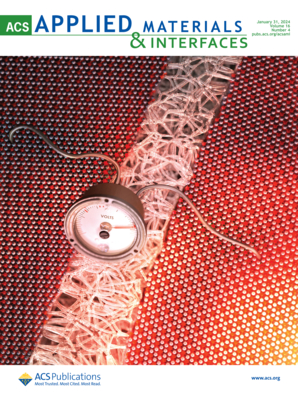Self-Aligned Fluorinated-Organic Ligand for Boosting the Performance of Perovskite Solar Cells
IF 8.2
2区 材料科学
Q1 MATERIALS SCIENCE, MULTIDISCIPLINARY
引用次数: 0
Abstract
Surface passivation is evident to be one of the most efficient approaches to achieve high efficiency with superior stability of perovskite solar cells (PeSCs). However, most previous approaches to surface passivation involve adding an additional coating process either before or after perovskite film fabrication, thereby introducing an extra processing step and significantly increasing production costs. Here, a simple yet novel one-step interfacial passivation approach was implemented by utilizing the self-aligning properties of fluorinated organic ligands (F4TmI) within a perovskite precursor solution. The inherent propensity of the ligand to spontaneously anchor onto the surface of perovskite guides the crystallization process of perovskites, thus largely enhancing the device performance and humidity stability. The optimized F4TmI-based devices achieved an efficiency of 21.1%, surpassing that of the control (19.8%). Moreover, the device stability significantly improved after the incorporation of F4TmI, maintaining 78.9 and 95.1% of its initial efficiency after aging at 60 °C and 60% relative humidity, respectively, for 330 h.

提高钙钛矿太阳能电池性能的自对准氟化有机配体
表面钝化显然是实现高效率、高稳定性的包晶体太阳能电池(PeSCs)的最有效方法之一。然而,以前的大多数表面钝化方法都需要在制造包晶石薄膜之前或之后增加一道额外的涂层工序,从而增加了额外的加工步骤,大大增加了生产成本。在这里,我们利用过氧化物前驱体溶液中氟化有机配体(F4TmI)的自对准特性,实现了一种简单而新颖的一步式界面钝化方法。配体自发锚定到过氧化物表面的固有倾向可引导过氧化物的结晶过程,从而在很大程度上提高器件的性能和湿度稳定性。基于 F4TmI 的优化器件的效率达到了 21.1%,超过了对照组(19.8%)。此外,加入 F4TmI 后,器件的稳定性明显提高,在 60 °C 和 60% 相对湿度条件下老化 330 小时后,器件效率分别保持了初始效率的 78.9% 和 95.1%。
本文章由计算机程序翻译,如有差异,请以英文原文为准。
求助全文
约1分钟内获得全文
求助全文
来源期刊

ACS Applied Materials & Interfaces
工程技术-材料科学:综合
CiteScore
16.00
自引率
6.30%
发文量
4978
审稿时长
1.8 months
期刊介绍:
ACS Applied Materials & Interfaces is a leading interdisciplinary journal that brings together chemists, engineers, physicists, and biologists to explore the development and utilization of newly-discovered materials and interfacial processes for specific applications. Our journal has experienced remarkable growth since its establishment in 2009, both in terms of the number of articles published and the impact of the research showcased. We are proud to foster a truly global community, with the majority of published articles originating from outside the United States, reflecting the rapid growth of applied research worldwide.
 求助内容:
求助内容: 应助结果提醒方式:
应助结果提醒方式:


